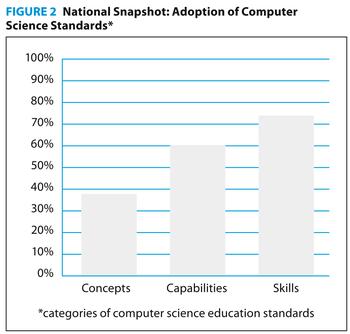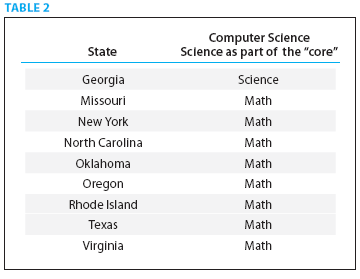High-level findings
- Consistent with efforts to improve "technology literacy," states are focused almost exclusively on skill- based aspects of computing (such as, using a computer in other learning activities) and have few standards on the conceptual aspects of computer science that lay the foundation for innovation and deeper study in the field (for example, develop an understanding of an algorithm), as noted in Figure 2.

- Only 14 states have adopted secondary state education standards for computer science instruction to a significant degree (defined as more than 50% of ACM and CSTA’s national model computer science standards), leaving more than two- thirds of the entire country with few computer science standards at the secondary school level.
- Further, 14 states (and the District of Columbia) do not have even one upper-level standard for computer science instruction as part of their secondary education standards.
- Only 9 states allow computer science courses to count as a required graduation credit for either mathematics or science, as noted in Table 2.

- Further, no states require a computer science course as a condition of a student’s graduation despite national broad-based education studies calling for all students to be required to take some computer science in secondary education.
- There is deep and widespread confusion within the states as to what should constitute and how to differentiate technology education, literacy and fluency; information technology education; and computer science as an academic subject. We have elaborated on this critical issue in the section titled "K–12 Computer Science Education Background and Issues."



